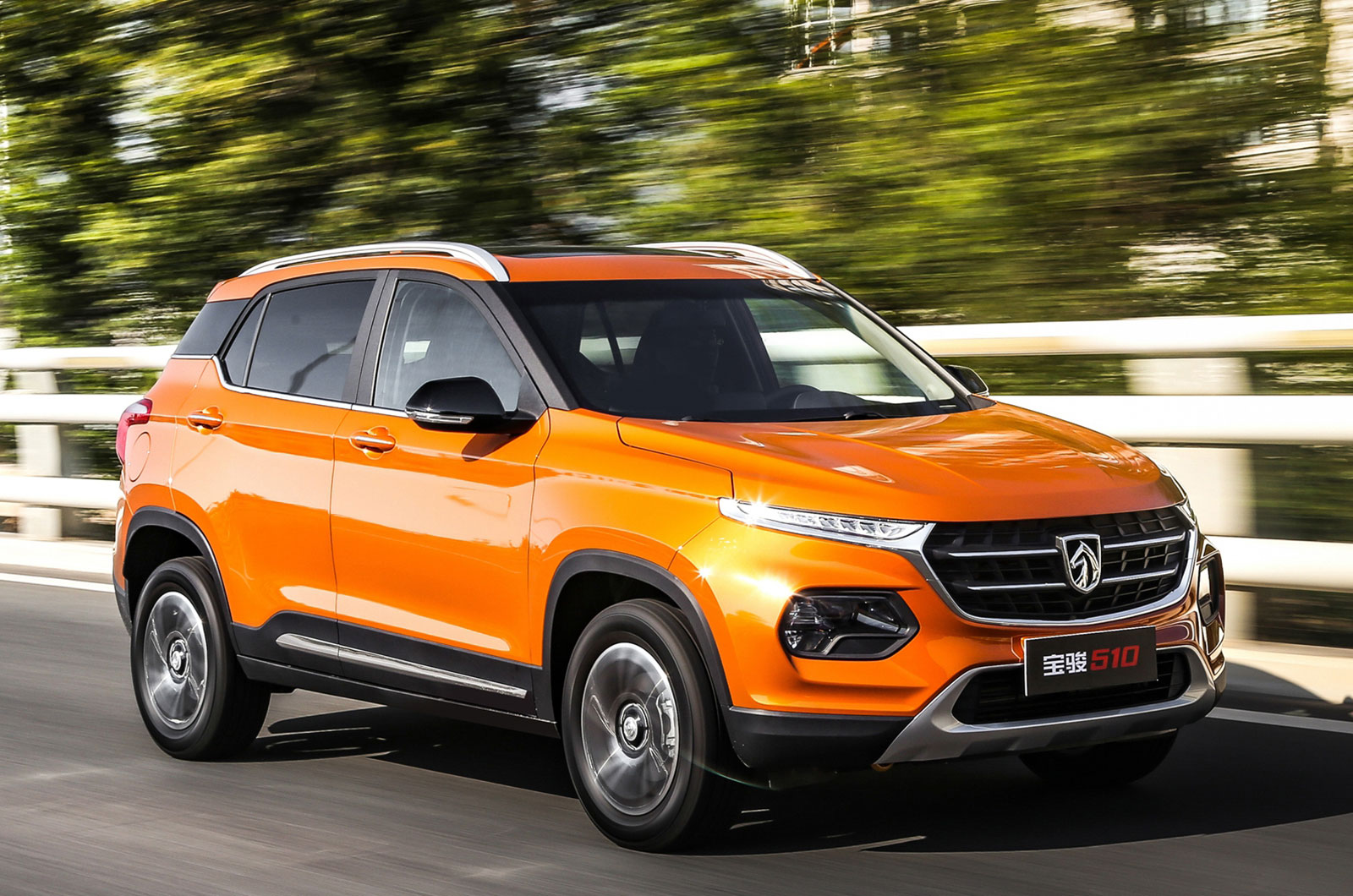Evaluating The Future Of Chinese-Manufactured Vehicles

Table of Contents
The Chinese automotive industry, once known primarily for producing low-cost vehicles, has made incredible strides in recent years. Significant investments in research and development, coupled with government support and access to a vast domestic market, have fueled advancements in technology and manufacturing capabilities. This progress has positioned Chinese automakers to challenge established global brands. This article aims to analyze the key elements that will determine the long-term success of Chinese-manufactured vehicles in both their home market and abroad.
Technological Advancements and Innovation in Chinese Auto Manufacturing
China's rise in the automotive sector is largely driven by its technological prowess. This progress is evident across several key areas:
Electric Vehicle (EV) Dominance
China is a global leader in electric vehicle (EV) battery technology and production. Companies like CATL (Contemporary Amperex Technology Co. Limited) are at the forefront of innovation, developing advanced battery chemistries and manufacturing processes that are driving down costs and improving performance. This dominance significantly impacts the global EV market.
- Innovative EV Models: Chinese manufacturers are producing a wide range of competitive EV models, from affordable city cars to high-performance luxury vehicles, catering to diverse consumer needs. Examples include the NIO ET7, the XPeng G9, and BYD's diverse range of EVs.
- Advancements in Battery Technology: China's investment in battery research has led to advancements in battery density, charging speed, and lifespan, making EVs more practical and appealing to consumers. Solid-state battery technology is another area where Chinese companies are making significant headway.
- Government Support for EV Development: The Chinese government provides substantial subsidies and incentives to promote the adoption of new energy vehicles (NEVs), including EVs, further accelerating their development and market penetration.
Autonomous Driving Capabilities
Chinese automakers are making significant strides in autonomous driving technology. While still behind some established players, they are rapidly catching up, leveraging partnerships with leading technology companies and investing heavily in artificial intelligence (AI) and sensor technologies.
- Autonomous Driving Features: Many Chinese vehicles now incorporate advanced driver-assistance systems (ADAS), including adaptive cruise control, lane-keeping assist, and automatic emergency braking. Fully autonomous driving capabilities are also under development.
- Partnerships with Tech Companies: Collaboration between Chinese automakers and tech giants like Baidu and Tencent is accelerating the development and deployment of autonomous driving features.
- Government Regulations: Government regulations play a significant role in shaping the development and deployment of autonomous driving technologies in China.
Integration of Smart Technology
Chinese-manufactured vehicles are increasingly incorporating advanced smart technologies, enhancing the overall driving experience and consumer appeal.
- In-Car Connectivity Features: Many models offer seamless smartphone integration, Wi-Fi hotspots, and over-the-air software updates.
- Integration with Smart Home Devices: Some vehicles offer integration with smart home systems, allowing for remote control of home appliances and other connected devices.
- User Interface Design and Innovation: Chinese automakers are focusing on intuitive and user-friendly interfaces, often incorporating large touchscreens and voice control systems.
Global Market Penetration and Competitive Landscape
The success of Chinese-manufactured vehicles will depend heavily on their ability to penetrate global markets and compete effectively with established international brands.
Export Strategies and Market Expansion
Chinese automakers are employing various strategies to expand their global presence. These include strategic partnerships, targeted marketing campaigns, and localization efforts to adapt their products to specific regional needs and preferences.
- Successful Market Entries: Chinese brands have seen success in various markets, particularly in Southeast Asia, Europe, and South America.
- Branding and Marketing Strategies: Significant investments are being made in building strong brand identities and enhancing their image in international markets.
- Localization Efforts: Adapting vehicles to meet local regulations, consumer preferences, and cultural nuances is crucial for success in international markets.
Pricing and Cost Competitiveness
A key advantage for Chinese automakers is their cost competitiveness. Efficient manufacturing processes and access to a vast supply chain often allow them to offer vehicles at lower prices than their international counterparts.
- Pricing Models: Different pricing strategies are employed depending on the target market and the vehicle's features.
- Cost Advantages: Economies of scale, efficient production processes, and access to a vast and cost-effective supply chain give Chinese manufacturers a significant advantage.
- Impact of Import Tariffs and Trade Agreements: Trade policies and tariffs can significantly impact the pricing and competitiveness of Chinese vehicles in international markets.
Addressing Consumer Perceptions and Building Trust
Overcoming negative perceptions about the quality and reliability of Chinese-manufactured vehicles is a significant challenge. Building consumer trust requires a multifaceted approach:
- Strategies to Improve Brand Image: Investments in marketing and public relations are crucial in building a positive brand image.
- Quality Control Measures: Implementing rigorous quality control processes is essential for ensuring product reliability and customer satisfaction.
- Customer Service Initiatives: Providing excellent customer service and addressing customer concerns promptly can help build trust and loyalty.
- Overcoming Skepticism about Reliability: Demonstrating the reliability and durability of their vehicles through warranties and performance data is essential.
Challenges and Potential Roadblocks
Despite their impressive progress, Chinese automakers face several challenges that could hinder their future growth.
Supply Chain Issues and Geopolitical Risks
The global automotive industry is vulnerable to supply chain disruptions. Geopolitical factors, trade tensions, and sanctions can significantly impact the availability of crucial components and materials for Chinese automakers.
- Dependence on Specific Components: Reliance on specific suppliers for crucial components creates vulnerability to disruptions.
- Trade Tensions and Sanctions: Geopolitical tensions and trade disputes can lead to sanctions and tariffs, impacting production and exports.
- Impact of Global Events: Global events, such as pandemics and natural disasters, can disrupt supply chains and hinder production.
Regulatory Hurdles and Compliance Standards
Meeting diverse regulatory requirements and compliance standards in different markets presents a significant challenge.
- Emission Regulations: Stringent emission regulations vary significantly across different countries.
- Safety Standards: Meeting stringent safety standards is crucial for gaining market access and consumer trust.
- Import Regulations: Navigating complex import regulations and certification processes can be challenging.
Conclusion: The Future Trajectory of Chinese-Manufactured Vehicles
The future of Chinese-manufactured vehicles is complex and multifaceted. While technological advancements, cost competitiveness, and aggressive global expansion strategies offer significant opportunities for growth, challenges related to supply chain vulnerabilities, geopolitical risks, and overcoming consumer perceptions remain. The success of Chinese automakers will depend on their ability to navigate these challenges effectively. Staying informed about developments in this rapidly evolving sector is crucial. Keep up-to-date on the latest news and analysis regarding Chinese-manufactured vehicles to better understand their impact on the global automotive industry. [Link to relevant resource/further reading].

Featured Posts
-
 The Rise Of Chinese Car Brands A Threat Or An Opportunity
Apr 26, 2025
The Rise Of Chinese Car Brands A Threat Or An Opportunity
Apr 26, 2025 -
 I Got My Switch 2 Preorder At Game Stop My Experience
Apr 26, 2025
I Got My Switch 2 Preorder At Game Stop My Experience
Apr 26, 2025 -
 The End Of An Icon Anchor Brewing Companys Final Chapter
Apr 26, 2025
The End Of An Icon Anchor Brewing Companys Final Chapter
Apr 26, 2025 -
 The Trump Administration And The Future Of European Ai Regulation
Apr 26, 2025
The Trump Administration And The Future Of European Ai Regulation
Apr 26, 2025 -
 Activision Blizzard Deal Ftc Challenges Judges Ruling In Favor Of Microsoft
Apr 26, 2025
Activision Blizzard Deal Ftc Challenges Judges Ruling In Favor Of Microsoft
Apr 26, 2025
